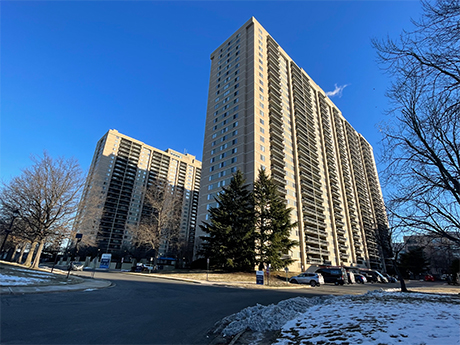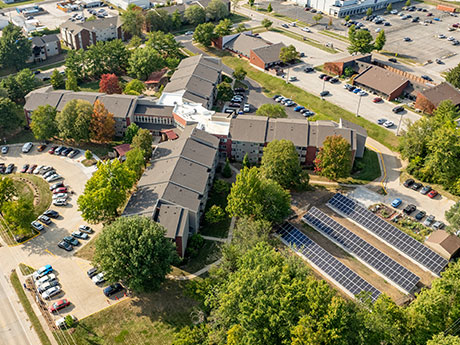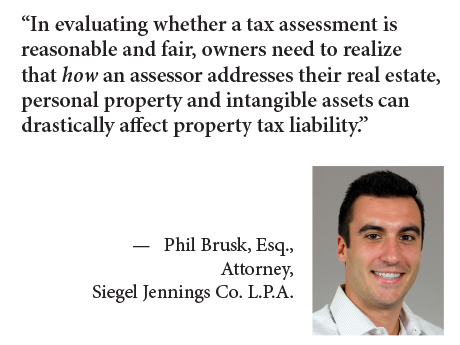Fannie Mae and Freddie Mac are adopting a more pro-business approach when it comes to closing multifamily loans in 2025 than in recent years, when sources say they were more selective. The two government-sponsored enterprises (GSEs) combined to produce 33 percent more multifamily loans in first-quarter 2025 compared with first-quarter 2024. “There is definitely a ‘volume on’ mindset at both shops,” says Landon Litty, director of agency sales at BWE. “This is a real positive for borrowers.” For Fannie Mae, the volume of multifamily loans totaled $11.8 billion in the first quarter of 2025, compared with $10.1 billion in the first quarter of 2024. Meanwhile, Freddie Mac produced approximately $15 billion in multifamily loans in the first quarter, financing around 144,000 rental units, well above the approximately $10 billion produced in first-quarter 2024. “The first quarter of 2025 has been dynamic, with real-time adjustments to meet market needs while maintaining a focus on soundness,” says a spokesperson at Freddie Mac Multifamily. Other sources attest that the GSEs are focusing on their sponsors more so than in previous years. T.J. Edwards, chief production officer for the multifamily finance division at Walker & Dunlop, says the agencies are proactively vetting first-time borrowers …
Heartland Feature Archive
Affordable HousingDistrict of ColumbiaFeaturesHeartland Feature ArchiveMultifamilyMultifamily & Affordable Housing Feature ArchiveNortheast Feature ArchiveSoutheastSoutheast Feature ArchiveTexas & Oklahoma Feature ArchiveWestern Feature Archive
Necessity has sparked innovation across the multifamily sector. Property managers are implementing new technology platforms to streamline leasing, maintenance and resident communications because of rising operating costs, says Jim Cunningham, president of Naperville, Illinois-based Marquette Management, which owns or manages nearly 16,000 units across eight states. Operating costs increased 7 percent last year, according to CBRE. Rising insurance costs are one of the primary drivers. Property managers are also embracing technology to enhance resident satisfaction. Wendy Deetjen, vice president of Habitat’s market-rate portfolio, says that today’s renters expect more convenience, personalization and instant communication than in the past. Chicago-based Habitat manages more than 13,000 units across Illinois, Michigan and Minnesota. “Reputation management and resident engagement remain critical, and while staffing challenges persist industrywide, automation helps our teams focus on what matters most — delivering excellent service and building stronger communities,” says Deetjen. The automation and problem-solving capabilities that come with artificial intelligence (AI) free up property managers to devote more time to other tasks. This advancement is especially beneficial at a time when the labor supply is low. Cunningham says that labor in multifamily management remains tight but is improving. The industry faced a 4.1 percent turnover rate in 2024, …
By Timothy Rye, Esq., Larkin Hoffman Across the country, local governments are struggling to maintain revenue amid widespread property value declines, and as a result they are resorting to tax rate increases. This funding challenge increases the burden on owners of commercial properties that are already suffering and ultimately degrades property values and the overall tax base. Let’s examine how this unfortunate and predictable scenario plays out, and the negative impact it inflicts on commercial real estate values. Rate-to-Value Dynamics A commercial property’s taxes depend on its assessed value, which represents the property’s market value determined by a local government assessor. The assessed value multiplied by the tax rate determines the property tax owed. Taxing entities calculate the tax rate by dividing the budget, or dollar amount levied for an area, by the total assessed value of all properties within the jurisdiction. Taxpayers can multiply the resulting tax rate, also known as a mill rate, by the assessed value of their individual property to determine the tax owed. How can decreasing assessed property values lead to an increase in tax rates? When property values decline, the overall property tax base shrinks. The local government’s fiscal needs remain stable, however, or …
AcquisitionsDevelopmentFeaturesHeartland Feature ArchiveIllinoisLeasing ActivityMidwestRestaurantRetail
JLL: U.S. Retail Sector Remains Optimistic as Market Conditions Shift
by John Nelson
CHICAGO — Retail closures are at a cyclical high, totaling a whopping 9,900 business shutdowns in 2024, according to JLL’s fourth-quarter 2024 retail report entitled “United States Retail Market Dynamics.” For the first time in several years, store closures outpaced store openings in a calendar year. Fabric and crafts retailer JOANN, who filed for Chapter 11 bankruptcy protection twice within a year, is shuttering all 800 stores, while major department store chain Macy’s will close 150 stores over the next three years, with 66 closures anticipated in 2025 alone. The highest number of store closures resulted from discount and dollar stores like Family Dollar, CVS Health and Big Lots, as well as specialty retailers like Party City. Retail closures are represented across different size brackets, with more than 55 percent of announced closures identifying with footprints ranging from 5,000 square feet to 20,000 square feet. Expanding retailers such as Dollar General, O’Reilly Automotive and Five Below align with these vacant boxes, while larger, major closures like Bed Bath & Beyond and Toys “R” Us occupy more “desirable” locations. On the flip side, between 2024 and 2025, there were roughly 7,700 new retail store openings announced. Nearly 3,000 of these openings …
By Wilson Ding, Related Midwest The integration of sustainable features in affordable housing often comes with a perceived conflict: the expense of green technologies versus tight operating margins. However, innovative financing strategies and open dialogue with government agencies can bridge the gap, making sustainability more achievable for these projects. By their very nature, affordable housing developments tend to be very complex, often with a number of public and private stakeholders and a multifaceted capital stack. Securing additional resources for the implementation of sustainable technologies in both new and existing communities adds another layer of intricacy, contributing to the sector’s lag behind market-rate in this area. Yet while the installation of sustainable technologies may require a higher upfront investment of time and money, their ability to reduce ongoing expenses makes them a smart long-term strategy. Tax incentives, grants and other subsidies can also help make these projects feasible. Round Barn Manor My firm, Related Midwest, recently finished a $6.8 million renovation of Round Barn Manor, a 156-unit affordable seniors housing community in Champaign, Illinois. Completed in September 2024, the renovation was part of a broader $38.6 million recapitalization initiative carried out in collaboration with Related Affordable, our national affordable housing arm …
Housing affordability continues to be a pressing issue across the country. According to the National Low Income Housing Coalition, the U.S. has a shortage of 7.3 million rental homes affordable and available to renters with extremely low incomes. There are 34 affordable and available rental homes for every 100 extremely low-income renter households, which are defined as households either at or below the federal poverty guideline or 30 percent of the area median income (AMI), whichever is higher. “The country is facing a severe shortage of high-quality affordable housing, with demand far exceeding supply in the Midwest and every market we serve across the country,” says Geoff Milz, director of development for Ohio with Pennrose, which maintains eight offices across the U.S. “The housing crisis, compounded further by inflation and the rising cost of living, spans all demographics, geographies and family types.” In short, the need for affordable housing “has never been more critical,” adds Milz. Affordable housing developers are eager to build, but they must get creative to obtain the necessary financing for new projects. Due to the restricted rents, affordable housing properties are unable to generate as much income as market-rate assets. “The primary tool that we use …
By Becky McLaughlin, WithMe Inc. As the seasons change, so do your residents’ needs and desires. Providing amenities and planning events that align with these shifting demands can be a game-changer for property managers. In fact, resident events have been shown to boost satisfaction, improve online reviews and impact lease renewal decisions, making them an essential tool for long-term property success. According to WithMe Inc.’s 2025 amenity outlook survey, which gathered insights from senior multifamily professionals at the country’s top property management companies, including Bozzuto, Greystar and Willow Bridge, there is a rise in resident demand for multipurpose spaces where they can relax, connect with neighbors and work. Finding ways to transform these common spaces to align with the changing seasons not only enhances resident satisfaction but also fosters a vibrant community atmosphere where people feel empowered to live, work and play year-round. Warming up the cooler months As temperatures drop, residents tend to spend more time indoors, increasing foot traffic in the lobby and shared spaces. This presents the perfect opportunity to transform these areas into cozy spots where they can comfortably work, connect and unwind. Imagine plush seating, soft lighting and a hot coffee and cocoa amenity that …
FeaturesHeartland Feature ArchiveMultifamily & Affordable Housing Feature ArchiveNortheast Feature ArchiveSoutheast Feature ArchiveTexas & Oklahoma Feature ArchiveWestern Feature Archive
Forecast Survey: What’s Your Take on Commercial Real Estate in 2025?
by John Nelson
The editors of REBusinessOnline.com are conducting a brief online survey to gauge market conditions in 2025, and we welcome your participation. The survey should only take a few minutes to complete. Questions range from property sectors that you are most bullish on heading into 2025 to trends in deal volume to your outlook for interest rates. The results of our 14th annual survey will be compiled and published in the January issues of our regional magazines. Conducting these surveys is part of our mission at France Media to provide readers with indispensable information, and we couldn’t do it without your help. To participate in our broker/agent survey, click here. To participate in our developer/owner/manager survey, click here. To participate in our lender/financial intermediary survey, click here. (Note: Please remember to click on “done” to properly submit the survey.)
FeaturesHeartland Feature ArchiveIllinoisMidwestNortheastNortheast Feature ArchiveOhioPennsylvaniaSeniors Housing
Dual Appraisal Methods Improve Opportunities to Get Fair Taxation for Seniors Housing Properties
by John Nelson
By Phil Brusk and Caleb Vahcic of Siegel Jennings Co. L.P.A. The seniors housing sector can’t seem to catch a break. Owners grappling with staffing shortages and other operational hardships lingering from the pandemic are facing new challenges related to debt and spiraling costs. High interest rates and loan maturations loom over the industry, with $19 billion in loans coming due within the next 24 months, according to Cushman & Wakefield’s “H1 2024 Market Trends and Investor Survey” on senior living and care. Factors driving high costs include wage pressures, inflation and — incredibly — rising property taxes. Despite operational challenges and declining occupancy at many facilities during the COVID-19 pandemic, property tax relief for seniors housing was mixed. Many assessors resisted downward adjustments to taxable values, maintaining that recovery was around the corner. Now, seniors housing operators face property tax assessments that equal or exceed pre-pandemic levels. As in the hospitality sector, most seniors housing owners understand that their operating properties include more value components than real property alone. In evaluating whether a tax assessment is reasonable and fair, however, owners need to realize that how an assessor addresses their real estate, personal property and intangible assets can drastically …
Amid a slump in investment sales volume, investors eagerly welcomed the Federal Reserve’s interest rate cut in September. The half-percentage point decrease was more than what many in the industry had anticipated, but Fed Chairman Jerome Powell recently indicated that additional rate cuts this year will likely not be as aggressive. The move by the Fed came after a spike in the federal funds rate from near zero in March 2022 to a range of 5.25 to 5.5 percent in July 2023 — a period during which the central bank raised the federal funds rate 11 times. Ultimately, the higher interest rate environment has led to a major slowdown in the sales volume of net lease properties this year, says Randy Blankstein, president of The Boulder Group based in Wilmette, Illinois. “Transaction volume is down approximately 60 percent from 2022 levels,” he says. In a net lease transaction, the tenant pays a portion or all of the taxes, insurance fees and maintenance costs for a property in addition to rent. For the 12-month period that ended in June, net lease investment volume across property types decreased by 34 percent from the same period a year ago to $35.4 billion, according …
Newer Posts











